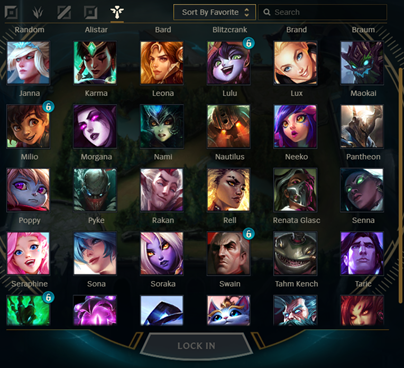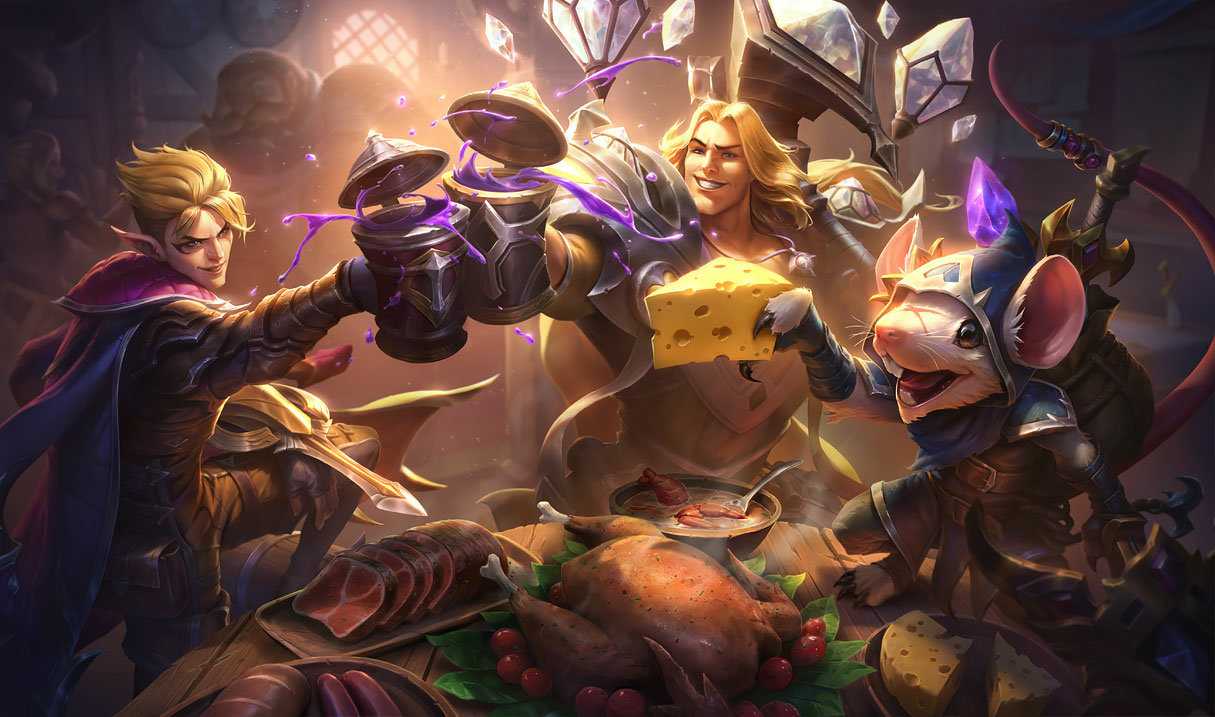The Different Types of Support Champions in League of Legends
Ready to hop in headfirst into a fight or cure your allies' wounds? Learn all about the various support types and their strengths from the start!
Ready to hop in headfirst into a fight or cure your allies' wounds? Learn all about the various support types and their strengths from the start!
Do you like protecting your allies? Helping them sustain pressure in lane and ensuring them a smoother transition into the late game? Support might be a great fit for you!
While League of Legends is not the most straightforward game for newcomers, almost any player can find a role that suits their strengths. This week, we’re introducing Support, the role that puts a priority on assisting allies accomplish their goals. While it is not the most popular or flashy role on the team, it remains an important piece of the team’s foundation in almost every point of the game.
The team’s Support starts off in the bottom lane, sharing with the team’s Marksman. Bottom lane normally consists of two players, which distinguishes it from other lanes. Players in other lanes must fend for themselves in a one-on-one duel, while Supports work in tandem to assist their ADCs through the earliest parts of lane phase, aiming to increase the carry’s chances of farming and earning enough gold to make a heavy impact during the later stages of the match. Sharing a lane with another player can really help build your understanding of teamwork and how abilities interact.

With over 30 Champions currently listed under Support in the “Collections” tab, there are so many unique ways that players can help their carries scale into the late game. Some Support characters focus primarily on protecting their carry from damage, while others aim to chip away at enemy defenses to secure kills. Although the role boasts a wide variety of playable characters, we can classify these 30+ Champions into three simplified categories: Enchanters, Tanks, and damage Supports. Some Champions can significantly change how they play depending on build, but the categories below are based primarily on the overall goal that the champion’s kit aims to achieve.
Enchanters are often what people think of when the word “Support character” comes up. These champions are healers, characters that aim to reduce or reverse damage taken through buffs to their allies. Do you love queuing Support in MMOs like WoW or FFXIV? Then the Enchanter role might be just what you’re looking for.
Whether these champions spend resources to restore their fellow laner’s HP, or proactively put up shields to reduce their ADC’s health loss, the goal is to help allies sustain their position within lane and team fights. Some Enchanters focus on taking care of one ally at a time, while others can heal the entire team all at once.
Many Enchanters aim to scale into the late game with their carries. With that, they usually run low on mana during early laning phase because of low mana regen. It’s important to limit unnecessary use of healing abilities and try to poke by abusing ranged autos and abilities. Chipping away at enemies also will give you stacks on your World Atlas, allowing you to get gold for items to enhance your abilities. Items that boost healing also improve mana regeneration, helping these supports shine!
Soraka, Lulu, Janna, Milio, Yuumi, and Sona are some characters that fit into the Enchanter category. Enchanters often have abilities geared towards stopping enemies from moving or fighting, which may include knock-ups or knock backs (Janna/Milio), slowing abilities (Yuumi/Sona), or other forms of crowd control like silencing (Soraka) or polymorphing (Lulu).

Tanks are the beefy members of the team. They usually have a significantly higher amount of HP than their allies, and higher resistances to prevent them from taking damage. These Supports work best through peeling (taking the focus off the carry) and engaging (starting combat). If you enjoy running into battle head-first clad in heavy armor, you will love Supporting with a Tank Champion.
These champions combine crowd control and their ability to soak damage to help disrupt team fights in progress or create opportunities for picks. They use their strong crowd control and defensive abilities to stand front and center, protecting the squishier members of the team when it matters most.
During lane phase, Tank Supports often struggle against damage-focused Supports if they cannot find an opportunity to engage. Given that tanks are generally melee-focused (barring a few skills that allow for engaging from a distance, like Thresh’s hook), fighting people that can poke them out can cause early lane to feel uninteractive. It’s important in the early game for Tank Supports to focus on finding opportunities to engage without risking heavy damage. Look for chances to go in after the enemies have used their crowd control, like after Morgana has thrown her Q.
Rell, Taric, Thresh, Blitzcrank, and Leona are some of the champions in this category. Many of them have stuns (Rell/Taric/Leona) and knock-ups (Rell/Thresh) but Thresh and Blitzcrank have long-range engage abilities that allow them to start combat from nearly half a screen away. In the late game, tanks are often the ones to start teamfights and turn the tide in their team’s favor.
Supports that focus on dealing damage are aggressive playmakers of the team. They focus on dealing damage either all at once (burst) or as chip damage (poke) to apply pressure to their enemies. These Supports are experts at zoning opponents out of lane and holding firm control over the early game thanks to their high damage output. These Supports come in all playstyles, ranging from Mages to Assassins and even Marksmen. If you like making plays and keeping enemies on the edge of their seats, damage Support might be for you.
Whether it be through explosive spells or precise attacks, damage Supports excel at setting up kills for their allies. Their range and damage help keep enemies from engaging, while keeping the pressure up and helping their fellow laner scale. These Supports often deal the same amount of damage as their teammates, but sometimes can do much more, depending on the enemy team composition.
Damage Supports are the kings of the early game. They might burn through mana quickly if they spam abilities, but their early game damage output reigns supreme. These Supports are the most likely to take kills from their ADCs, which can cause issues if too many are stolen. This category of Support has such a wide variety of potential picks that making sure you fit into your team, and against the opposing team, is key.
Some Champions that cover a small corner of the wide range of damage-focused Supports are Xerath, Zyra, Brand, Pyke, and Senna. The first three listed are all Mages, but do not have the same goals. Xerath looks to stun and burst out enemies from a long range, great against squishy targets. Zyra and Brand try to burn enemies with all of their damage over time, which is very good against Tanks. Pyke is an Assassin, looking to run in and execute the enemies, which grants gold to his ADC. Senna is unique, combining the Marksman playstyle with healing and shielding abilities.
Support is a role with a huge amount of diversity through its selection of champions and playstyles. Sharing a lane with another player can be a great way to help understand the ways champions interact in-game and ease you into the basics of gameplay theory. With the role including everything from the beefiest Tanks to the most lethal Assassins, there is always a possibility of finding your new favorite way to play. If you’re looking for a role where you get to try something new most games and help fill gaps in your team’s overall composition, Support might be a wonderful spot to start!